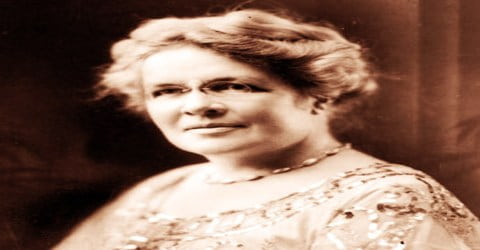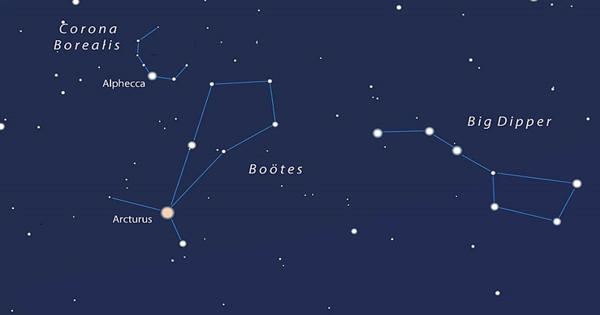Biography of Barbara McClintock
Barbara McClintock – American scientist and cytogeneticist.
Name: Barbara McClintock
Date of Birth: June 16, 1902
Place of Birth: Hartford, Connecticut, United States
Date of Death: September 2, 1992 (aged 90)
Place of Death: Huntington, New York, United States
Occupation: Scientist
Father: Thomas Henry McClintock
Mother: Sara Handy McClintock
Early Life
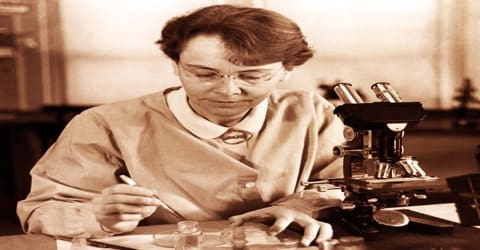
An American scientist whose discovery in the 1940s and ’50s of mobile genetic elements, or “jumping genes,” won her the Nobel Prize for Physiology or Medicine in 1983, Barbara McClintock was born Eleanor McClintock on June 16, 1902 in Hartford, Connecticut, the third of four children born to homeopathic physician Thomas Henry McClintock and Sara Handy McClintock. McClintock received her Ph.D. in botany from Cornell University in 1927. There she started her career as the leader in the development of maize cytogenetics, the focus of her research for the rest of her life. She also discovered transposition genes moving about within chromosomes often described as jumping genes and showed that genes are responsible for switching the physical traits of an organism on or off.
Her theories on gene regulation and the discovery of “jumping genes” were a major breakthrough for the scientific world. An inquisitive soul since her childhood days, she was also a highly independent personality and that was probably one of the reasons her name was changed to Barbara from Eleanor; the latter being considered a very feminine name by her parents. The young child had a strained relationship with her mother who insisted that Barbara shouldn’t be admitted to college but eventually at his father’s insistence she was admitted to college. It was during college that she realized her interest in genetics and embarked on a life long journey in the stream. Always engrossed in solving some of the other problems this eminent scientist made some path-breaking advancements in her chosen field. Starting from devising a technique to observe the chromosome in maize to charting the first gene map, to making a detailed analysis on the life cycle of the species Neurospora crassa, her achievements are innumerable. But her most significant contribution was her theory on genetic regulation which even earned her a Nobel Prize. The dedicated cytogeneticist devoted her entire life towards scientific advancement and died a solitary soul.
Childhood, Family and Educational Life
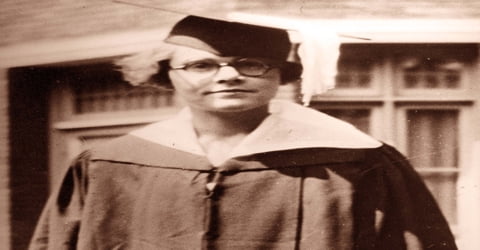
A renowned American scientist, Barbara McClintock was born on June 16, 1902, Eleanor McClintock aka Barbara McClintock, to parents Thomas Henry and Sara Handy McClintock in the capital city of Connecticut. As a young girl, her parents determined that Eleanor, a “feminine” and “delicate” name, was not appropriate for her, and chose Barbara instead. McClintock was an independent child beginning at a very young age, a trait she later identified as her “capacity to be alone”.
From the age of three until she began school, McClintock lived with an aunt and uncle in Brooklyn, New York in order to reduce the financial burden on her parents while her father established his medical practice. She was described as a solitary and independent child. She was close to her father but had a difficult relationship with her mother, tension that began when she was young. The McClintock family moved to Brooklyn in 1908 and McClintock completed her secondary education there at Erasmus Hall High School; she graduated early in 1919.
At the ‘College of Agriculture’, affiliated to the ‘Cornell University’ McClintock made her first tryst with genetics. Encouraged by eminent botanist Claude B. Hutchinson she took up the subject as a discipline, after earning a bachelor’s degree in Botany in 1923. Two years later she completed her post-graduation and was awarded an MA in Botany. For her doctoral dissertation, she involved in research work involving the structure and functionality of chromosomes in maize. She worked on her thesis under the guidance of botanists Lowell Fitz Randolph and Lester W. Sharp and was awarded a Ph.D. in 1927.
Personal Life
Barbara McClintock dedicated her entire life to her work and never married. Although she abandoned her life as a loner when she started college, McClintock never made close friends. She regarded herself as a free spirit; coming too close to anyone might have robbed her of some of that precious freedom. She enjoyed her privacy.
Career and Works
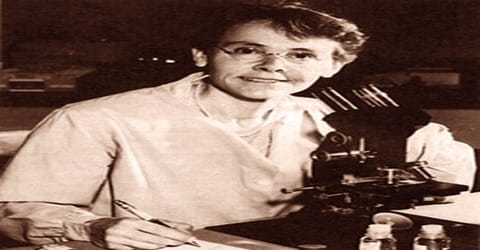
During her graduate studies and postgraduate appointment as a botany instructor, Barbara McClintock was instrumental in assembling a group that studied the new field of cytogenetics in maize. This group brought together plant breeders and cytologists and included Marcus Rhoades, future Nobel laureate George Beadle, and Harriet Creighton. Rollins A. Emerson, head of the Plant Breeding Department, supported these efforts, although he was not a cytologist himself. She also worked as a research assistant for Lowell Fitz Randolph and then for Lester W. Sharp, both Cornell Botanists.
In the years 1930-31, McClintock made a major breakthrough by explaining the concept of chromosomal cross-over as observed in homologous chromosomes during meiosis. Along with botanist Harriet Creighton, she established scientific proof of the hypothesis that chromosomal cross over was responsible recombination of genetic traits. The duo published a paper titled ‘A Correlation of Cytological and Genetical Crossing-over in Zea mays’ explaining their works.
Based on her experiments and publications during the 1930s, McClintock was elected vice president of the Genetics Society of America in 1939 and president of the Genetics Society in 1944. She received a Guggenheim Fellowship in 1933 to study in Germany, but she left early because of the rise of Nazism. When she returned to Cornell, her alma mater, she found that the university would not hire a female professor. The Rockefeller Foundation funded her research at Cornell (1934-36) until she was hired by the University of Missouri (1936-41).
Also in 1931, McClintock created the first ever genetic map for maize representing the arrangement of three genes on maize chromosome 9. In a further expansion of their work on the chromosomal crossover, they demonstrated that the phenomenon occurs not only in homologous chromosomes but is also evident in sister chromatids. She then worked in association with Lewis Stadler in Missouri during 1931-32 and used X-rays as a mutagen for her studies on genetics. She studied the effects of radiation on chromosomal behavior and explained the arrangement of DNA sequence on chromosome 6 of maize which is necessary for the formation of a nucleolus.
In 1933, McClintock established that cells can be damaged when nonhomologous recombination occurs. During this same period, McClintock hypothesized that the tips of chromosomes are protected by telomeres. McClintock received a fellowship from the Guggenheim Foundation that made possible six months of training in Germany during 1933 and 1934. She had planned to work with Curt Stern, who had demonstrated crossing-over in Drosophila just weeks after McClintock and Creighton had done so; however, Stern emigrated to the United States. Instead, she worked with geneticist Richard B. Goldschmidt, who was the head of the Kaiser Wilhelm Institute. She left Germany early amidst mounting political tension in Europe, and returned to Cornell, remaining there until 1936, when she accepted an Assistant Professorship offered to her by Lewis Stadler in the Department of Botany at the University of Missouri-Columbia. While still at Cornell, she was supported by a two-year Rockefeller Foundation grant obtained for her through Emerson’s efforts
A few years earlier, in the summers of 1931 and 1932, McClintock had visited Missouri and learned how to use X-rays to cause mutations in cells. When she returned in 1936, she began using X-rays again. She discovered that large-scale mutations can arise from breaking, fusion, and bridging of chromosomes. This BFB cycle, discovered by McClintock, leads to chromosomal instability, which means daughter cells have a different number of chromosomes from the cell that produced them. Although she discovered the phenomenon in the late 1930s, this is still an active research field today. Chromosomal instability is common in cancers.
In 1936, McClintock joined the ‘University of Missouri’ as an Assistant Professor in Botany. Two years later she made a breakthrough, in the field of cytogenetics, when she charted the structure and functionality of the genetic loci of the chromosomes, namely centromeres.
In 1941 McClintock moved to Long Island, New York, to work at the Cold Spring Harbor Laboratory, where she spent the rest of her professional life. In the 1940s, by observing and experimenting with variations in the coloration of kernels of corn, she discovered that genetic information is not stationary. By tracing pigmentation changes in corn and using a microscope to examine that plant’s large chromosomes, she isolated two genes that she called “controlling elements.” These genes controlled the genes that were actually responsible for pigmentation. McClintock found that the controlling elements could move along the chromosome to a different site and that these changes affected the behavior of neighboring genes. She suggested that these transposable elements were responsible for new mutations in pigmentation or other characteristics.

In 1944, in recognition of her prominence in the field of genetics during this period, McClintock was elected to the National Academy of Sciences only the third woman to be elected. The following year she became the first female president of the Genetics Society of America; she was elected its vice-president in 1939. In 1944 she undertook a cytogenetic analysis of Neurospora crassa at the suggestion of George Beadle, who used the fungus to demonstrate the one gene-one enzyme relationship. He invited her to Stanford to undertake the study. She successfully described the number of chromosomes, or karyotype, of N. crassa and described the entire life cycle of the species. Beadle said, “Barbara, in two months at Stanford, did more to clean up the cytology of Neurospora than all other cytological geneticists had done in all previous time on all forms of mold.” N. crassa has since become a model species for classical genetic analysis. The same year McClintock became the third woman to be inducted into the ‘National Academy of Sciences’ and was also named the President of ‘Genetics Society of America’. Back at the ‘Cold Spring Harbor Laboratory’ the same year, she continued her studies on maize and explained the impact of the ‘Dissociator’ (Ds) and ‘Activator’ (Ac) genetic loci, on the phenomenon of genetic mutation.
In 1948 McClintock discovered that Dissociators and Activators could transpose in other words, jump to different places on the chromosome. They are often, therefore, called transposable elements.
During the years 1948-50, McClintock made startling revelations regarding the genetic behavior and propounded the theory of gene regulation. The ‘Dissociator’ (Ds) and ‘Activator’ (Ac) units, which she discovered could exchange their positions on the chromosomes, were the “controlling elements” that influenced the behavior of genes. Her extensive research on Ac/Ds was presented in the paper ‘The origin and behavior of mutable loci in maize’ published by the National Academy of Sciences in their journal in 1950. She argued that it was the controlled regulation of the genes by the Ac/Ds units, which leads to the formation of functionally and structurally different cells in multicellular organisms.
In summer 1951, McClintock reported her work on the origin and behavior of mutable loci in maize at the annual symposium at Cold Spring Harbor Laboratory, presenting a paper of the same name. The paper delved into the instability caused by Ds and Ac or just Ac in four genes, along with the tendency of those genes to unpredictably revert to the wild phenotype. She also identified “families” of transposons, which did not interact with one another. Her work on controlling elements and gene regulation was conceptually difficult and was not immediately understood or accepted by her contemporaries; she described the reception of her research as “puzzlement, even hostility”. Nevertheless, McClintock continued to develop her ideas on controlling elements. She published a paper in Genetics in 1953, where she presented all her statistical data and undertook lecture tours to universities throughout the 1950s to speak about her work.
Though McClintock pursued her research work on the Ac/Ds units she refrained from making her inferences public, owing to the reaction of her contemporaries towards her theories. A grant awarded by the National Academy of Sciences in 1957 provided the much-needed boost to this scientist and she embarked on a new project which involved the study of the progression of the chromosomal changes in maize. Throughout the next two decades, Barbara remained involved in the research work in Central America and during the extensive investigation, she also delved into ethnobotany and paleobotany. The findings of the exhaustive research work were compiled together and published as ‘The Chromosomal Constitution of Races of Maize’.
In 1960 Francois Jacob and Jacques Monod started to publish their work describing genetic regulation in bacteria. Realizing the similarities between their work and hers, McClintock responded in 1961 with a paper: Some Parallels between Gene Control Systems in Maize and in Bacteria. Slowly, her theory of transposable elements and gene control began to gain credibility.
In 1967, McClintock was named scientist emeritus at the ‘Carnegie Institute of Washington’ after her tenure as a researcher ended at the institute. She worked with graduate students and was a ‘Distinguished Service Member of the Carnegie Institution of Washington’.
At the beginning of the 1970s, molecular biologists discovered transposition taking place in bacteria and viruses. They began to see that transposition was important in immunology and cancer. Scientists also saw the potential importance of transposition in manipulating genes to function in the way scientists wanted them to genetic engineering.
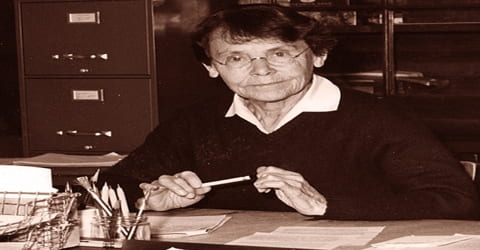
McClintock’s work was ahead of its time and was for many years considered too radical or was simply ignored by her fellow scientists. Deeply disappointed with her colleagues, she stopped publishing the results of her work and ceased giving lectures, though she continued doing research. Not until the late 1960s and ’70s, after biologists had determined that the genetic material was DNA, did members of the scientific community begin to verify her early findings. When recognition finally came, McClintock was inundated with awards and honors, most notably the 1983 Nobel Prize for Physiology or Medicine. She was the first woman to be the sole winner of this award.
Towards the later years of her career, this eminent cytogeneticist spent most of her time involved in research at the ‘Cold Spring Harbor Laboratory’ in Long Island, New York.
Awards and Honor
In May 1971 McClintock received the National Medal of Science from President Richard Nixon.
The ‘Genetics Society of America’ awarded her the ‘Thomas Hunt Morgan Medal’ in the year 1981. The following year Barbara was honored by the ‘Columbia University’ with the ‘Louisa Gross Horwitz Prize’ for Biology or Biochemistry.
The distinguished was awarded the Nobel Prize in the category of Medicine or Physiology in the year 1983.
Death and Legacy
Barbara McClintock died of natural causes in Huntington, New York, on September 2, 1992, at the age of 90; she never married or had children. She was buried in the Huntington Rural Cemetery. The outstanding scientist is the eponym for a laboratory at the Carnegie University of Wahington and a street in a science park in Berlin.
Barbara McClintock has made many significant contributions in the sphere of cytogenetics but her work on the controlling units and gene regulation paved way for many future discoveries. The revolutionary discoveries regarding the transposable elements on the DNA which lead to genetic mutation earned her a Nobel Prize in Medicine or Physiology.
On May 4, 2005, the United States Postal Service issued the “American Scientists” commemorative postage stamp series, a set of four 37-cent self-adhesive stamps in several configurations. The scientists depicted were Barbara McClintock, John von Neumann, Josiah Willard Gibbs, and Richard Feynman. McClintock was also featured in a 1989 four-stamp issue from Sweden which illustrated the work of eight Nobel Prize-winning geneticists. A small building at Cornell University and a laboratory building at Cold Spring Harbor Laboratory were named for her. A street has been named after her in the new “Adlershof Development Society” science park in Berlin.
Information Source:

